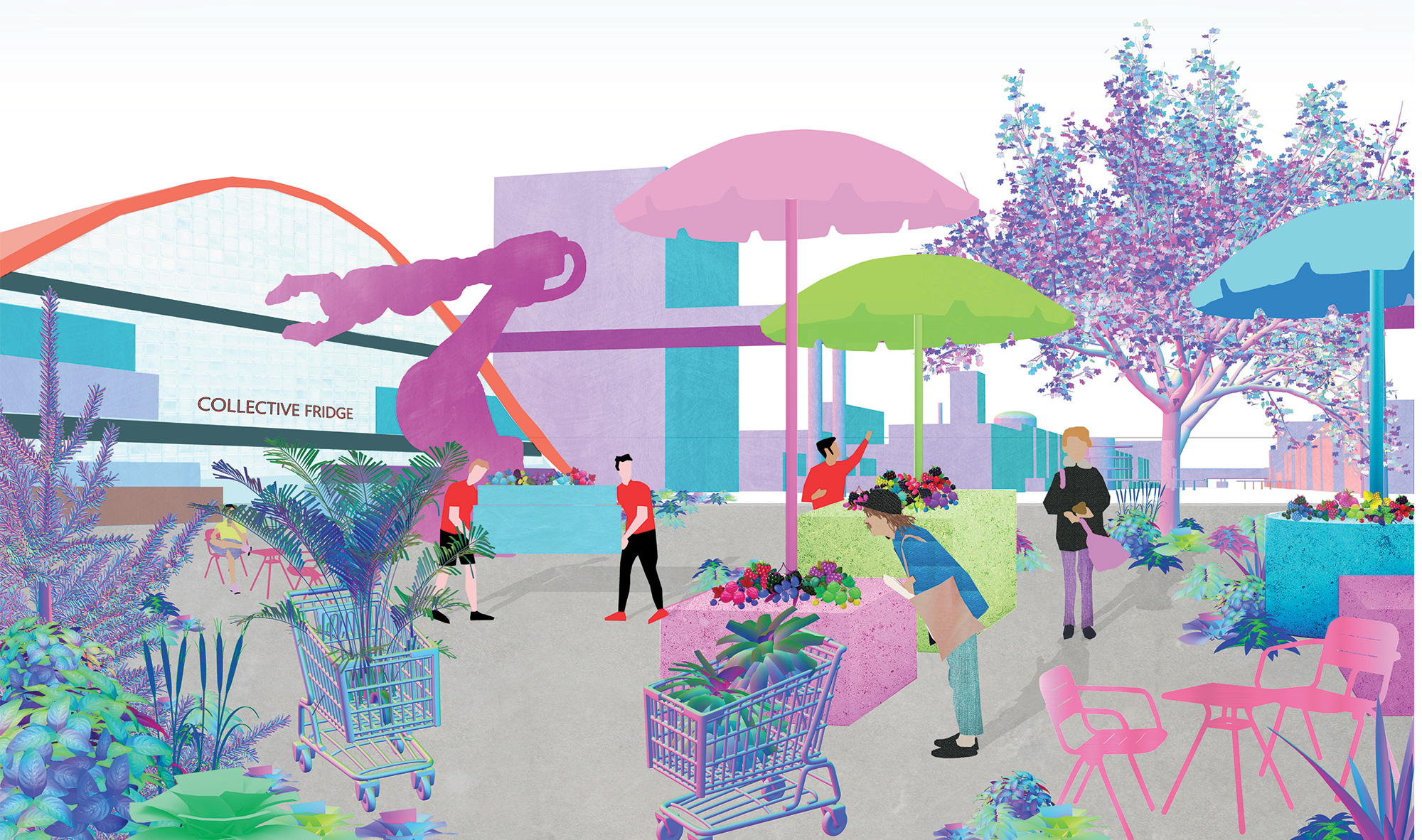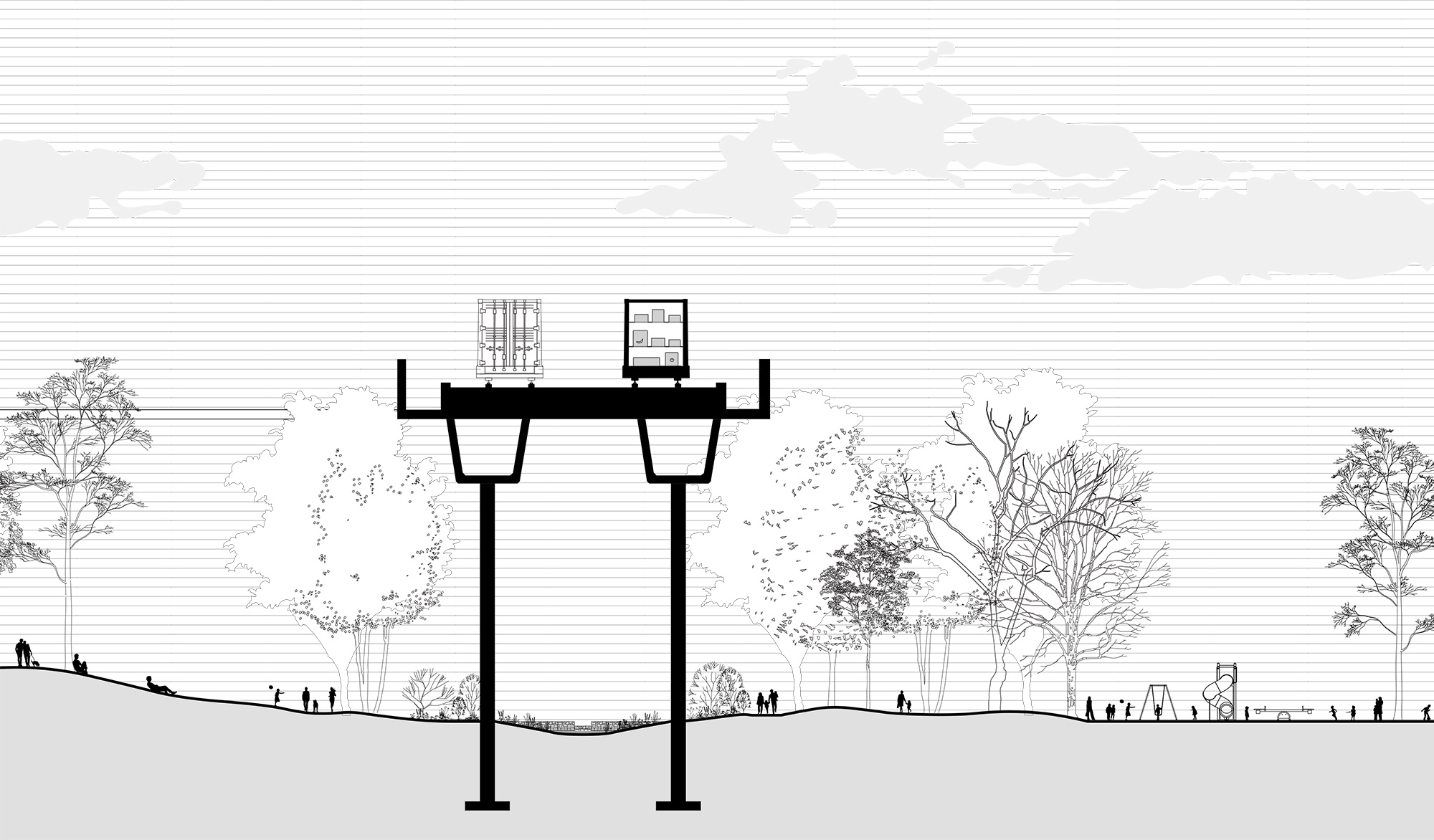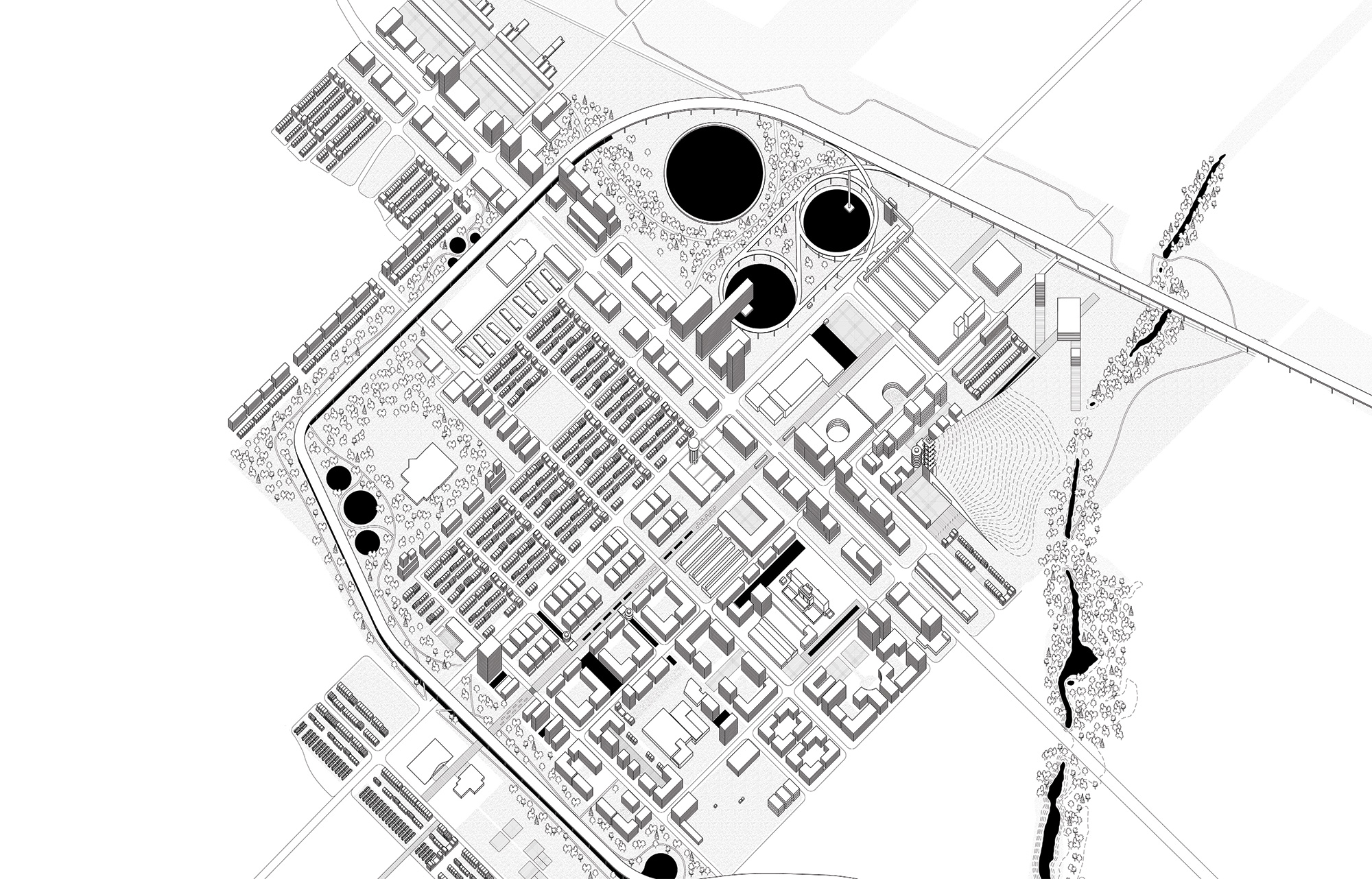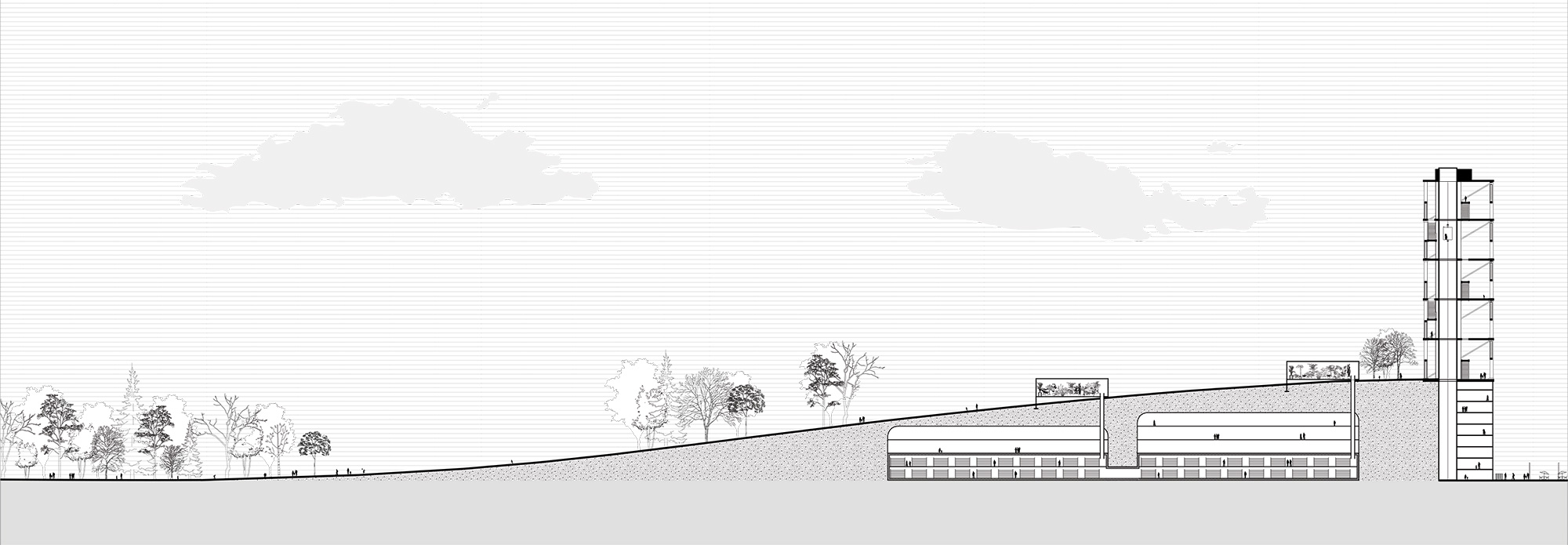
Hamed Nadi, Connor Stevens, Saaraa Premji, Louisa Kennet, "Hub 8"
Superstudio is a multidisciplinary design studio. Students from the Daniels Faculty's Master of Architecture, Master of Landscape Architecture, and Master of Urban Design programs collaborate on detailed master plans for urban neighbourhoods.
This group was half architecture students (Connor and Saaraa) and half landscape architecture students (Hamed and Louisa). Their assignment was to develop a plan for the Golden Mile, a neighbourhood in central Scarborough, near Eglinton and Warden Avenues. The area is currently known mainly as a big-box retail district, but the neighbourhood's reputation is poised to change in the near future. The Eglinton Crosstown, a new rapid-transit light rail line that's expected to be completed in 2022, will dramatically improve the Golden Mile's public transit connectivity, making it a more attractive place to live and work.
Each student group was required to base its master plan on the needs of three different community stakeholders. Hamed, Connor, Saaraa, and Louisa chose to focus on Metro Inc., a major grocery store chain that already has an outlet in the area; the United Way, a charitable organization that runs a community hub in the Golden Mile; and the Toronto and Region Conservation Authority, a government organization that works to ensure the well-being of the Toronto area's watersheds.
Hamed, Connor, Saaraa, and Louisa set about devising a series of design interventions that could increase the neighbourhood's residential density while addressing their three chosen stakeholder groups. One of the things they knew they wanted to incorporate into their plan was the utility corridor that runs through the north end of the Golden Mile. After some research, they determined that the corridor is amazingly long: it carries electricity lines all the way from Toronto to Quebec.

The elevated guideway.
The group decided that they could make better use of all that clear-cut land if electricity wasn't the only thing able to travel through it. So they designed an elevated train guideway, which they envisioned as a way for the neighbourhood to receive bigger and more frequent shipments of food products from elsewhere in Canada. This, they reasoned, would make the neigbhourhood an attractive location for food importers like Metro.

The Hub 8 site plan.
Inside the utility corridor, the group marked out space for a series of Nautilus Ponds large enough to capture a significant portion of the Golden Mile's rainfall. The ponds would allow the stormwater to be treated and reused within the neighbourhood, which would prevent the water from flowing over the area's many paved surfaces and overwhelming the city's sewer system.

Section view of a cold storage facility and collective fridge.
The master plan also includes a way of channelling the Golden Mile's food-related commerce into community benefits of the kind that might be delivered by an organization like the United Way. The group designed a series of "collective fridges" — public food storage facilities that would be built in underground chambers for maximum thermal efficiency. The community fridges would partner with Metro and other local food enterprises to provide a food-bank-type service for residents in need.
Instructors: Mauricio Quirós Pacheco and Fadi Masoud

